Leucospermum cordifolium
| Botanical Name | Leucospermum cordifolium |
|||||||||||
| Family | Proteaceae - The Protea family
|
|||||||||||
| Pronunciation | loo-koh-SPER-mum kor-di-FOH-lee-um |
|||||||||||
| Common Name(s) |
English: Pincushion
Afrikaans: Speldekussing; Bobbejaanklou; Luisiesboom; Luisiesbos
|
|||||||||||
| Plant Group |
|
|||||||||||
| Plant Size |
|
|||||||||||
| Position |
|
|||||||||||
| General Information |
|
|||||||||||
| Specific Information | Leucospermum cordifolium is a rounded shrub with a single main stem and drooping, horizontal branches. The shrub can spread to 2 meters in diameter and up to 1,5 meters tall. Leaves are stiff and quite thick and are variable in shape, ranging from roundish to oblong, with up to 6 teeth at the end of the young leaves while older leaves may have only one. Young leaves are covered with soft hairs but mature leaves are smooth. Each flower head produces just a few hard, nut-like seeds. Pincushions have a relatively short life span of around 10 - 15 years. Plants tend to become leggy after a few years, especially if not pruned. The flowers attract insects and nectar- and insect-eating birds. Leucospermum cordifolium is categorised in the Red List of South African Plants as Near Threatened as a result of habitat loss due to alien plant invasion and agriculture as well as uncontrolled picking of flowers. This is the most popular horticultural Pincushion from which many colourful cultivars have been developed. |
|||||||||||
| Ad Break | ||||||||||||
| Flowers | ||||||||||||
| Description | the flower heads are made up of many tiny flowers each with a stiff protruding style, with up to three heads held at the end of a stout stem |
|||||||||||
| Season |
|
|||||||||||
| Colour |
|
|||||||||||
| Growth Rate | ||||||||||||
| Plant Uses |
|
|||||||||||
| Distribution and Habitat | in a small area at the southern tip of the Western Cape, from Kogelberg to Soetanysberg, in sandstone, acid, nutrient poor soils |
|||||||||||
| Planting Suggestions | As with most members of the Proteacea family, Leucospermum cordifolium needs well-drained, nutrient poor soil in an airy position. In general, Proteacea do not grow well in clay soils and will die if their roots are kept wet. If possible plant on a slope or on slightly elevated mound to improve drainage. Dig a hole twice the width of the container and one and a half times the height. Do not apply artificial fertilizer or fresh manure to the soil mix. Mulch well around the plant but keep the area around the trunk of the plant clear, as the stem area of the plant must be able to dry off. Proteacea have a dense network of fine roots just below the surface of the soil and no cultivation should take place below them as disturbance will damage the roots and possibly introduce fungal disease, resulting in the death of the plant. The use of a thick mulch of leaf litter and pine bark/needles will feed the plant, keep the soil cool and discourage weeds. In summer rainfall areas water regularly during winter and occasionally in summer if the weather is very dry. Always water in the early morning, preferably before the sun has fully risen. Stems bearing old flower heads should be cut back to encourage the development of new shoots. Leucospermum cordifolium can be propagated from seed or cuttings. For detailed information go to: http://www.plantzafrica.com/frames/plantsfram.htm |
|||||||||||
| Lorraine's Garden Notes | References: http://www.sa-venues.com/plant-life/leucospermum.htm http://www.mounttomahbotanicgarden.com.au/plant.asp?id=104 http://www.plantzafrica.com/plantklm/leucospcordifol.htm http://finebushpeople.co.za/content/leucospermum-cordifolium http://redlist.sanbi.org/species.php?species=795-19 Rebelo, Tony; 1995. Sasol Proteas - A field guide to the Proteas of Southern Africa. Fernwood Press, Vlaeberg |
|||||||||||
| Medicinal Uses | No data found. |
|||||||||||
| Ad Break | ||||||||||||



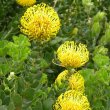

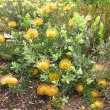
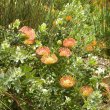
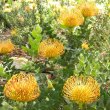
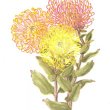
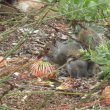


Discuss this plant
Share knowledge, ask a question or give an experience.